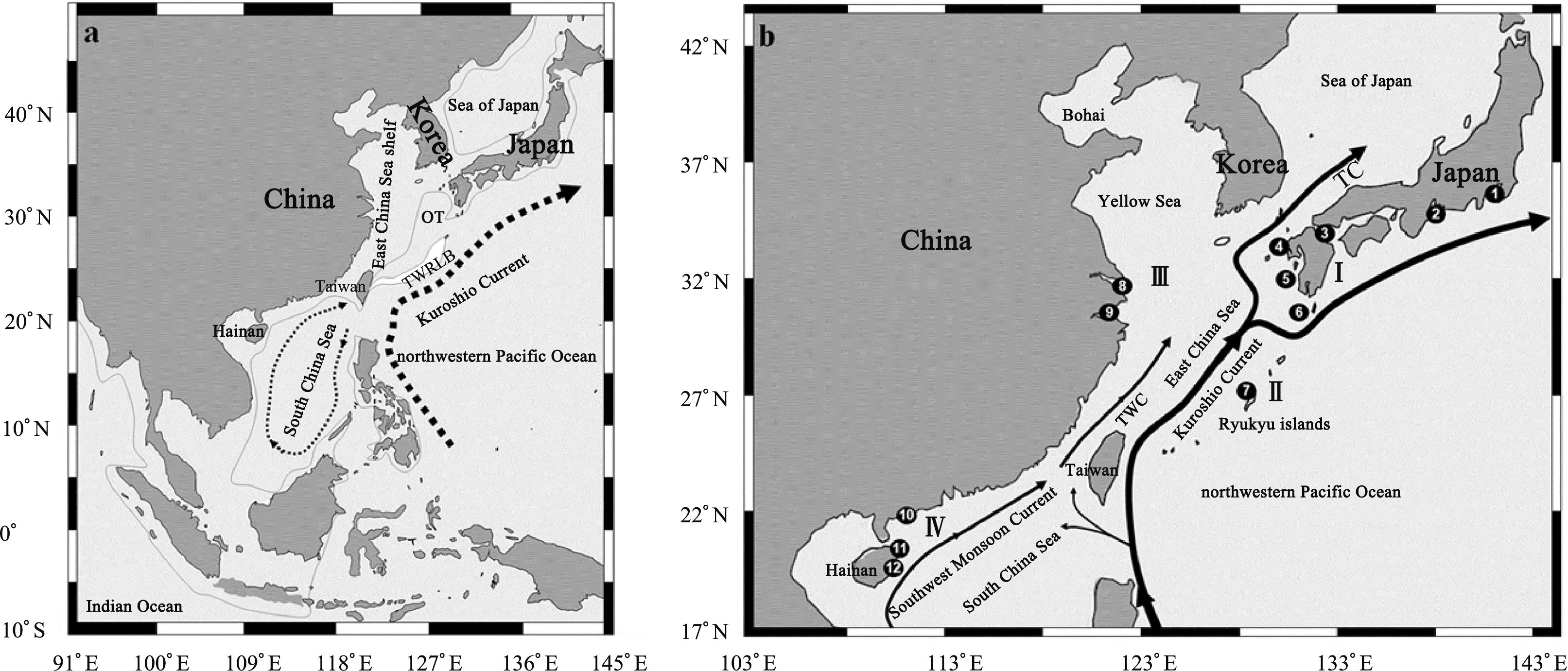Biogeographical role of the Kuroshio Current in the amphibious mudskipper Periophthalmus modestus indicated by mitochondrial DNA data
Quaternary climatic cycles have influenced marine organisms’ spatial distribution and population dynamics. This study aimed to elucidate the evolutionary influences of contemporary and glacial physical barriers on the population structure, demography and colonization history of the mudskipper (Periophthalmus modestus) based on a mitochondrial gene segment (ND5) from 131 individual fish sampled in the northwestern Pacific Ocean. The current Kuroshio Current and glacial land bridge across the Taiwan Strait appeared to have restricted migration among the South China Sea, coastal East China and Japan. However, genetic homogeneity (Nm>1) also suggested contemporary larval transportation by sea circulation between the East China Sea and the South China Sea or historical dispersal along the glacial exposed shoreline among China, Japan and the Ryukyu Islands. Evolutionary signals of the strengthened East Asian Summer Monsoon in the mid-Pleistocene and regional difference in intertidal primary productions were indicated by a late-Pleistocene population expansion with a higher effective population size in the South China Sea than in the East China Sea. Furthermore, a potential colonization origin of P. modestus from the South China Sea was consistently inferred by different clues, including the population coalescence time, the ancestral haplotype distribution, the number of private haplotypes and species/genetic diversity.
The sampling sites of Periophthalmus modestus and oceanographic conditions in the China seas during the glacial (a) and contemporary (b) periods.
History of the East Asian Summer Monsoon indicated by magnetic susceptibility (MS) (a) and the demographic history of P. modestus, the East China Sea population and the South China Sea population (b)
List of the related results: www.nature.com/articles/srep15645
-
Scientific Reports ,
2015 ,
5, 15645
: doi: 10.1038/srep15645


